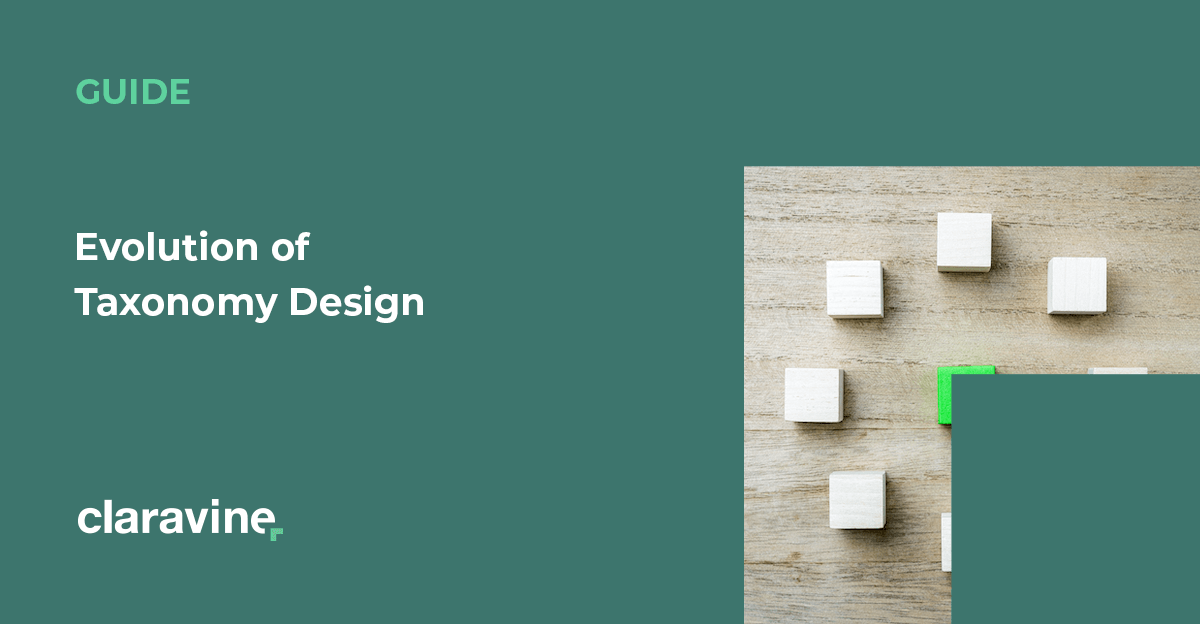Evolution of a Taxonomy Design Development
Best Practices from the Perspective of a Practitioner

Where to begin?
Your organization has done a thorough review and decided that a taxonomy (or a hierarchical knowledge model of mutually exclusive concepts) is necessary to organize information. The next step is determining the scope and audience of this future taxonomy. Before diving in, there are few questions you should ask yourself before creating a hierarchy of terms.
What is being organized?
First, you need to define what is being organized. A taxonomy requires a defined scope in order to create mutually exclusive choices between concepts. Are you organizing research paper topics, jobs on a job board or products your organization manufactures or distributes? Each scope is unique to what you are organizing and each taxonomy will look quite different once complete.
What is most important at this stage is that the first level of the taxonomy can create groups based on a single aspect of the items that are being organized. For organizing long-form text such as articles, the primary subject may be the most appropriate concept on which your taxonomy breaks down. A taxonomy of products that a manufacturer distributes mostly commonly breaks down by product type.
Who is the intended audience?
Next, ask who will be the ultimate audience of this taxonomy? When developing the appropriate labels for each conceptual grouping, it is important that the naming conventions are accurate, mutually exclusive, unambiguous and easily understood by those both classifying items to the taxonomy and those using the taxonomy discover what they are looking for.
Consider how the intended audience thinks of these concepts, how they expect them to be typically organized and what terms they use when describing these categories. For example, a consumer cannot be expected to understand the internal divisions within a company that manufactures a product even though that may be how a manufacturer organizes products internally.
For a taxonomy within a product information management system, products are typically organized by product type similar to how retailers distribute the product which is the organizational structure that would be most familiar to the ultimate recipient of the manufactured product, the consumer.
What level of complexity is required?
Finally, how much complexity is required to make items easily discoverable to end users? If items are being organized by subject, a simple hierarchy may be all that is required.
For items that require a user to narrow results further within a concept, additional attributes may be necessary. A taxonomy with these additional attributes is called a faceted taxonomy and is typical in e-commerce or product information management systems that contain many types of products.
While it may be tempting to add every attribute possible to a taxonomy, try to limit attributes to only the information that is relevant to the user of the taxonomy. It may be interesting to know the type of glue used in the label on a product, however if that information is either not useful to users of the taxonomy or that information does not currently exist, ask whether that attribute is worth the trouble of creating and maintaining over time before adding it. Generally, it is best to start with the bare minimum of information required and refine the taxonomy by adding more granular concepts over time.
If you’re managing an online retail store, view our guide to organizing your digital merchandising catalog here.
Classify items to the taxonomy
Now that you have a good idea of what you are organizing, who it is for and the form your taxonomy will take, it is important to look at what is being classified to the taxonomy. A useful taxonomy cannot be created in a vacuum so it is important to review holistically what is being classified.
A common mistake is to create a taxonomy without looking at what is being classified or to use only a selective sample of items and assume that it is representative of everything that will be encompassed in the system. This often results in gaps leaving concepts unaccounted for and may require significant rework later. To reduce or prevent that problem, make sure that every item to be classified has a single category concept where it can be classified.
Start with the first level of the taxonomy. These will be your broadest categories. Categories will be more granular as you descend the hierarchy but it is important to start with the top level first to ensure everything has a place within the taxonomy before concepts are broken down further.
Validate the taxonomy
While taxonomy development is a specific skill set that focuses on how products are organized, it is important that any taxonomy is vetted to ensure nuances are accounted for before it is released to a wider user audience. This can be done by interviewing subject matter experts to verify that all terms are used properly, that items are correctly classified and that critical information that should be incorporated into facets has not been overlooked.
Another way to test the usefulness of the taxonomy is with user testing. During this phase, you ask end users to use the taxonomy and identify any areas of ambiguity. This is commonly done by a UX research team using a tree test.
Maintain the taxonomy
Once you’ve created your taxonomy, classified all your items to it and launched it to users, the last and most important step is to establish governance of the taxonomy so that it maintains its structure over time. This requires a formal process, developed internally, that should include the following roles:
- who is allowed to propose changes to the taxonomy,
- who is allowed to makes those changes, and
- an executive sponsor that supports that goal of the taxonomy serving the needs of end users in the face of requests to alter the taxonomy for internal reasons.
A well-structured, flexible taxonomy that is consistently governed and supported by leadership can make finding information within an organization easy for years to come.



